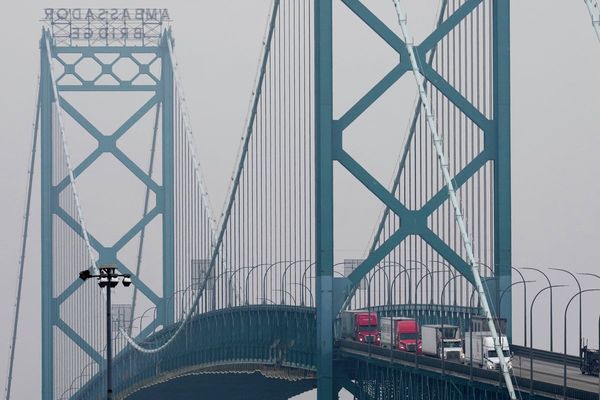
Two people have died and more than 100 were injured after Typhoon Nanmadol slammed into Japan on Monday, dumping heavy rain, paralysing traffic and leaving tens of thousands of homes without power.
The worst of the rainfall was seen in the southernmost island of Kyushu, where two people died, according to the fire and disaster management agency, before the typhoon was downgraded to a tropical storm as it made its way to the Pacific Ocean.
One of the victims was found inside his submerged car on farmland in Miyakonojo town, and another was recovered from beneath a landslide in Mimata.
One person was missing in Hiroshima prefecture, and 115 others were injured across western Japan, the agency said. Most of injuries were minor, with people falling in the rainstorm, hit by shards of broken windows or flying objects.
Nearly six million people were still under evacuation warnings and authorities cautioned against complacency, warning that in some areas even a small amount of additional rainfall could trigger flooding and landslides.
About 130,000 homes, most of them in the Kyushu region, were still without electricity on Tuesday morning. Many convenience stores were closed at one point and there was disruption to some supply lines.

Most transportation had returned to normal on Tuesday, for many people the first day back at work after a three-day weekend. Bullet train and most ground transportation services resumed, but dozens of flights were grounded in northeastern Japan.
The tropical storm has headed out to the Pacific Ocean off northern Japanese coast, the Japan meteorological agency said Tuesday.
While the meteorological agency had warned of a potentially devastating typhoon, which came ashore unleashing gusts of up to 234 kilometres (145 miles) an hour, the damage appeared relatively limited.
“The typhoon has all but disappeared today and the rain and wind are also subsiding now,” a crisis management official in the south-western town on Saito said.
But residents in the region said they had left their homes as the storm approached, fearing the worst.
“I came to the hotel to shelter because it was windy and I thought it was dangerous,” said Yasuta Yamaguchi, a resident of Izumi in Kagoshima prefecture. “I didn’t feel safe at home.”
Meteorological agency officials said the storm appeared to have lost much of its intensity.
“The thick cloud and eye area around the typhoon’s centre have already disappeared and it is weakening rapidly,” Ryuta Kurora, the head of the JMA’s forecast unit, told reporters.
Japan is struck by about 20 typhoons a year, mainly in the autumn, and routinely experiences heavy rainfall that causes landslides and flash floods.
Experts have warned that typhoons are traveling much slower and causing more damage across Japan in September, a trend that has been attributed to global heating.
In 2019, Typhoon Hagibis smashed into the country while it was hosting the Rugby World Cup, killing more than 100 people and forcing the cancellation of several pool matches. A year earlier, Typhoon Jebi shut down Kansai Airport in Osaka, leaving 14 dead.







